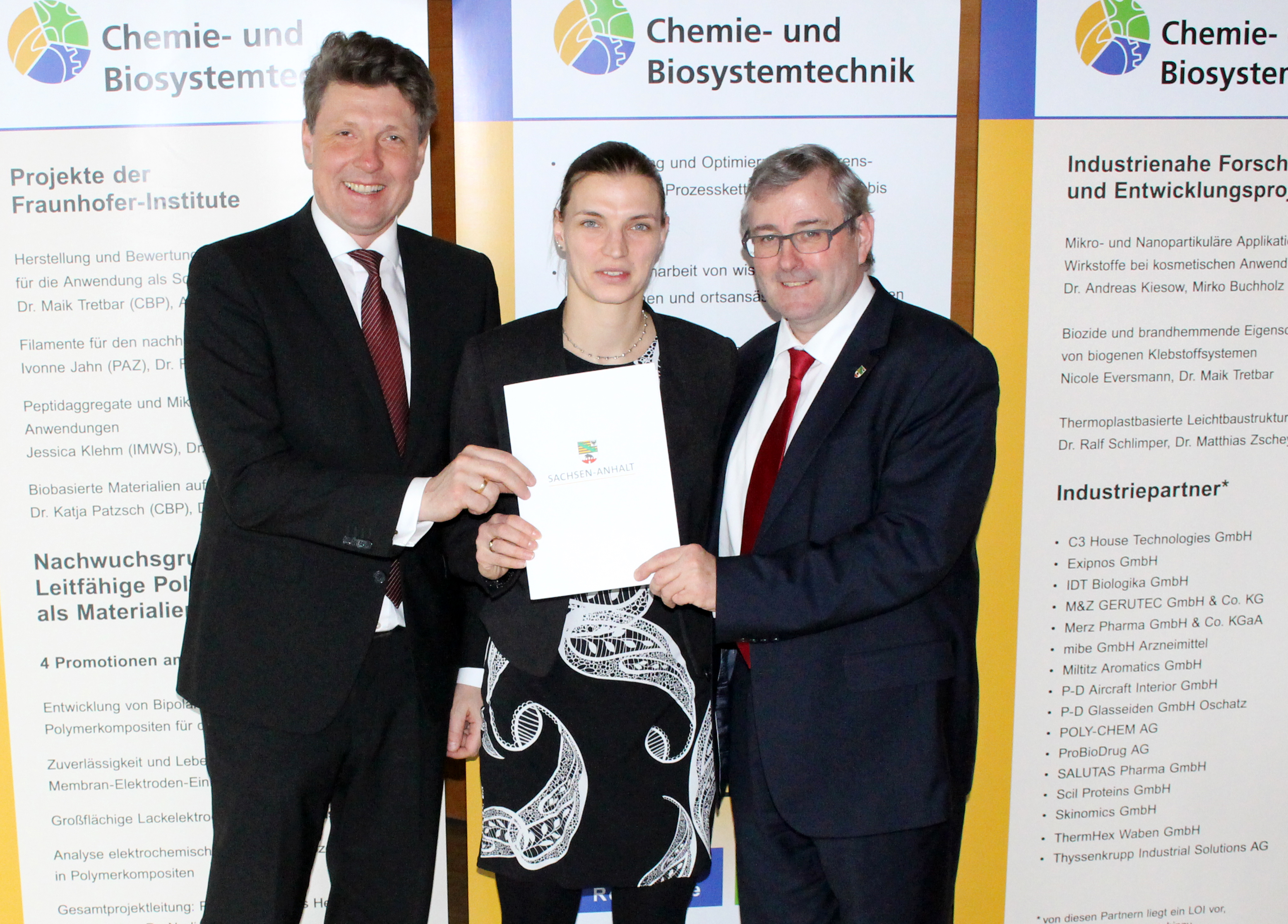New research group develops conductive polymer composite as material for electrolysis
Electrolysis plays a decisive role in the production of aluminum and chlorine. The process is also becoming increasingly important for Germany’s “turn of energy policies”, because electrolysis can be used to acquire storable hydrogen from wind or solar power. A new research group at the Fraunhofer Institute for Microstructure of Materials and Systems (IMWS (in Halle (Saale) now wants to make it possible to use polymer composites for electrolysis. This could be more cost-effective and efficient than the materials used to date. Dr. Jürgen Ude, State Secretary in the Ministry of Economy, Science and Digitization of the State of Saxony-Anhalt, today handed over the funding decision worth almost 1.2 million euros.



Plastics are lightweight, easy to process and have high chemical resistance. Metals are robust and loadable, they also have a variable thermal and electrical conductivity. Graphite, for example, is corrosion resistant and can also conduct electricity. If these materials and other fillers are combined skillfully, a new type of composite material is created, which unites all these properties. Diverse possible uses open up for such polymer composites, for example, as protective sheathing for cables or enclosures for electronic components. In the new junior scientist group, which is part of the Chemical and Biosystems Engineering Centre, the Fraunhofer researches have a very particular application in their sights: They want to develop polymer composites, which can be used as materials for electrolysis.
In water electrolysis, electricity is used to split water into hydrogen and oxygen. With this method, for example, electricity from highly fluctuating wind and solar energy can be used to produce hydrogen, a sought-after raw material for the chemical industry, which can also function as an energy store or as environmentally friendly fuel for fuel cell cars.
»The around 2700 wind turbines in Saxony-Anhalt already account for more than one third of the electricity generation in the state, but do not produce uniformly. This is what makes electrolysis so attractive for the businesses in the region: Surplus electricity can be converted into green hydrogen. If this is achieved extensively, we can make a decisive contribution to the question of how to store electricity from renewable energy«, said Dr. Jürgen Ude, Secretary of State in the Ministry of Economics, Science and Digitization of Saxony Anhalt, emphasizing the process’s potential.
Electrolysis also plays an important role in the production of aluminum, chlorine and sodium hydroxide solution, and in electroplating. A common factor in all these applications is the high loading of the materials used with regard to their chemical and mechanical stability and electrical and thermal conductivity. »New materials for electrolysis can make the process more efficient and less expensive. Polycomposites offer large opportunities in the field of water electrolysis, as well as for other applications«, said Dr. Nadine Menzel, who heads the project at the Fraunhofer IMWS.
For example, the junior research group wants to develop conductive polymer composites for bipolar plates for PEM electrolysis (PEM = Proton Exchange Membrane). This method is a key technology for the production of hydrogen from renewable energy. At the heart of PEM electrolysis is the stack, which is made up of several bipolar plates. Extreme requirements are set for these plates and the other components in the stack – high temperatures, high pressures and high voltages produce very corrosive conditions, which clog the individual components. Bipolar plates are therefore usually made of titanium, graphite, steel or stainless steel, and the surface is additionally protected with a coating made of precious metals such as gold or platinum. An innovative plastic material, which is able to cope with the extreme operating conditions and offers the necessary long-term stability, would therefore have enormous advantages with regard to material costs and in the production process.
In a further sub-package the researchers want to develop paint electrodes for the electrolysis of seawater. These could prevent the growth of marine organisms (biofouling) on ships’ hulls, without having to use toxic paints. Other objectives include the analysis of electrochemical corrosion processes in polymer composites and electronic components for electrolysis and investigation of the reliability and life of systems with alkaline membrane electrode units for electrolyzers and fuel cells.
The junior research group will be active until 2020 and benefits from the existing expertise in the Fraunhofer IMWS, for example in plastics processing, microstructure elucidation and the reliability of electronic components.